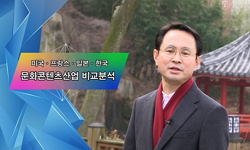The fourth provision of the <Japanese-Korea Treaty of Amity(Treaty of Ganghwa)>, established in February, 1876, and the <Lease contract of the concession in Pusan Port> agreed in the following January changed ‘Waegwan’ into Japanese ...
http://chineseinput.net/에서 pinyin(병음)방식으로 중국어를 변환할 수 있습니다.
변환된 중국어를 복사하여 사용하시면 됩니다.
- 中文 을 입력하시려면 zhongwen을 입력하시고 space를누르시면됩니다.
- 北京 을 입력하시려면 beijing을 입력하시고 space를 누르시면 됩니다.
https://www.riss.kr/link?id=A99746239
- 저자
- 발행기관
- 학술지명
- 권호사항
-
발행연도
2010
-
작성언어
Korean
- 주제어
-
등재정보
KCI등재
-
자료형태
학술저널
-
수록면
7-40(34쪽)
- 제공처
- 소장기관
-
0
상세조회 -
0
다운로드
부가정보
다국어 초록 (Multilingual Abstract)
The admittance of the Chosun Dynasty to found the Japanese ‘concession’ was explainable, since ‘Waegwan’, from the end of the Chosun Dynasty, has been a specialized district where trade and diplomatic affairs between the Dynasty and the Tsushima Han took place. Waegwan, although first established in the fifteenth-century, had been in an unstable state until sometime after the Japanese invasion of Korea in 1592, when the national relationship between the two was recovered: it then was reestablished in the beginning of 1678 and became the centrepoint of their interrelationship. The Chosun Dynasty successfully maximized the utility of the district by guarding and restricting the officials from Tsushima Han and the Japanese overseas’ traders.
When one scrutinizes and compares the idea and the policy of the two countries about the ‘concession’, it could be detected that Chosun had taken i t as a revival of an ol d tradition, but Japan had had a modern concept for it. The negotiations made in the <Japanese-Korea Treaty of Amity> and the <Lease contract of the concession in Pusan Port> well demonstrate the difference. Through these contracts, Chosun tried to limit the Japanese merchants within the restricted area as before, but Japan acquired advantageous trade policies in the whole Dongraebu, by convincing the Chosun government or making use of its ignorance.
After the establishment, Pusan concession developed into an ‘Japanese town’ which one could almost call a Japanese district. It became a Japanese trade and residential area, where the Japanese could manage and develop the estate, and even self-govern. However, a large Japanese population in the area was still from Tsushima, for only those from Tsushima could trade in the old Choryanghang concession, and the same people continued to cross the sea after the reform. They worked as commission agents of big merchants, the long enterprise with Chosun merchants from the period of the old concession. It seems clear that despite the modern characteristics of the new Choryanghang concession, it still contained pre-modern features of the old times.
The fourth provision of the <Japanese-Korea Treaty of Amity(Treaty of Ganghwa)>, established in February, 1876, and the <Lease contract of the concession in Pusan Port> agreed in the following January changed ‘Waegwan’ into Japanese ‘concession’.
The admittance of the Chosun Dynasty to found the Japanese ‘concession’ was explainable, since ‘Waegwan’, from the end of the Chosun Dynasty, has been a specialized district where trade and diplomatic affairs between the Dynasty and the Tsushima Han took place. Waegwan, although first established in the fifteenth-century, had been in an unstable state until sometime after the Japanese invasion of Korea in 1592, when the national relationship between the two was recovered: it then was reestablished in the beginning of 1678 and became the centrepoint of their interrelationship. The Chosun Dynasty successfully maximized the utility of the district by guarding and restricting the officials from Tsushima Han and the Japanese overseas’ traders.
When one scrutinizes and compares the idea and the policy of the two countries about the ‘concession’, it could be detected that Chosun had taken i t as a revival of an ol d tradition, but Japan had had a modern concept for it. The negotiations made in the <Japanese-Korea Treaty of Amity> and the <Lease contract of the concession in Pusan Port> well demonstrate the difference. Through these contracts, Chosun tried to limit the Japanese merchants within the restricted area as before, but Japan acquired advantageous trade policies in the whole Dongraebu, by convincing the Chosun government or making use of its ignorance.
After the establishment, Pusan concession developed into an ‘Japanese town’ which one could almost call a Japanese district. It became a Japanese trade and residential area, where the Japanese could manage and develop the estate, and even self-govern. However, a large Japanese population in the area was still from Tsushima, for only those from Tsushima could trade in the old Choryanghang concession, and the same people continued to cross the sea after the reform. They worked as commission agents of big merchants, the long enterprise with Chosun merchants from the period of the old concession. It seems clear that despite the modern characteristics of the new Choryanghang concession, it still contained pre-modern features of the old times.
목차 (Table of Contents)
- Ⅰ. 머리말
- Ⅱ. 거류지에 대한 양국의 인식과 정책
- Ⅲ. 거류지 형성과 초기 주민구성
- Ⅳ. 맺음말
- 참고문헌
- Ⅰ. 머리말
- Ⅱ. 거류지에 대한 양국의 인식과 정책
- Ⅲ. 거류지 형성과 초기 주민구성
- Ⅳ. 맺음말
- 참고문헌
- Abstract
동일학술지(권/호) 다른 논문
-
- 도시사학회
- 박세훈(서평자)
- 2010
- KCI등재
-
- 도시사학회
- 강성우(서평자)
- 2010
- KCI등재
-
- 도시사학회
- 김형열(서평자)
- 2010
- KCI등재
-
김창성, 『로마 공화국과 이탈리아 도시: 통합과 조직의 역사』
- 도시사학회
- 김경현(서평자)
- 2010
- KCI등재






 DBpia
DBpia







